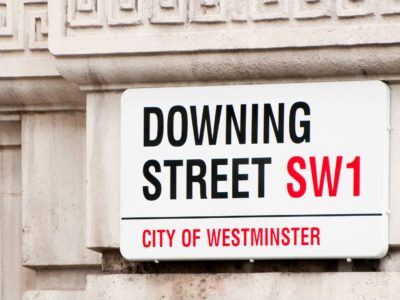The first few days of August have brought a burst of optimism across the UK property market, hinting at a more confident autumn ahead. From rising house prices to improved transaction volumes and mortgage expectations, the signs point to a market that, while not running hot, is certainly warming up. At the same time, the latest data from the English Housing Survey offers critical insight into the private rented sector (PRS), helping landlords, agents, and policymakers prepare for the changes ahead.
House Prices and Transactions on the Rise
According to the Nationwide House Price Index, UK house prices rose by 0.6% between June and July, pushing the annual growth rate to 2.4%. This brings the average UK house price to £272,664, reversing some of the subdued performance seen earlier this year.
Commenting on the figures, Nationwide’s Chief Economist Robert Gardner noted that “activity appears to be holding up well,” with mortgage approvals for June broadly in line with pre-pandemic norms. This points to a market that is not only stabilising but beginning to respond positively to improving conditions.
Supporting this view, HMRC data shows that residential transactions jumped by 13% in June, reaching 93,530 on a seasonally adjusted basis. This increase in transaction volumes suggests that buyer and seller confidence is gradually returning.
Base Rate Cut Expected to Boost Borrowing
One of the biggest factors buoying the market is the anticipated interest rate cut by the Bank of England’s Monetary Policy Committee, widely expected this week. Analysts almost unanimously predict a 0.25 percentage point reduction, from 4.25% to 4%.
While lenders have already begun pricing in these changes, a confirmed cut would send a strong signal of support to borrowers. Mark Harris, Chief Executive of SPF Private Clients, explains that “base rate reductions encourage activity and enable borrowers to plan ahead with more confidence.”
Mortgage brokers are reporting improved borrowing power, with homebuyers now able to borrow up to 20% more at the same interest rate than they could just a few months ago. This is opening doors for many previously priced-out buyers and improving affordability across the board.
Estate Agents Report Sustained Momentum
On the ground, estate agents are seeing continued activity despite the traditional summer slowdown. Jeremy Leaf, a North London agent, said: “Transactions are holding together relatively well,” with the potential for a “modest improvement all round.” Amy Reynolds of Richmond-based agency Antony Roberts echoed the sentiment, noting that agents are “seeing full diaries of viewings and off-market sales.”
The Guild of Property Professionals’ Iain McKenzie describes the market as “responding logically to improved conditions,” underscoring that this is not a boom, but a return to healthier, more stable activity levels.
Zoopla: A Buyers’ Market Emerging
Recent analysis from Zoopla offers further insight into the shifting landscape. According to their latest report:
- Buyer demand is up 11% year-on-year
- Agreed sales have risen by 8%
- Housing supply has increased by 12%, giving buyers more choice and contributing to a “buyers’ market” dynamic
However, national house price growth has slowed to 1.3%, down from 2.1% six months ago. Zoopla has revised its 2025 house price forecast down to 1%, citing rising supply and the end of temporary stamp duty reliefs as key factors.
Regional Disparities Remain
The picture isn’t uniform across the UK. While the Midlands, North, Wales, and Northern Ireland are seeing healthier price growth (2–3%) and greater momentum, London and the South East are facing affordability constraints and higher stamp duty costs. This has dampened buyer appetite and restricted price growth in those regions.
As we approach the end of the year, the anticipated autumn Budget may inject further uncertainty into the market. Some buyers are likely to hold off on major decisions until more is known about the Government’s fiscal plans.
Spotlight on the English Housing Survey: What It Means for the PRS
Alongside the latest market data, the recently released English Housing Survey (EHS) offers vital intelligence for those operating in or engaging with the private rented sector (PRS). Conducted annually by the Department for Levelling Up, Housing and Communities (DLUHC), the EHS provides the most comprehensive overview of housing conditions, affordability, and tenure in England.
Key Findings for the Private Rented Sector
- The PRS now accommodates approximately 4.6 million households, representing 19% of all housing stock – a slight dip from recent years.
- While average rents have risen, overall housing quality continues to improve.
- However, 13% of PRS homes still fail to meet the Decent Homes Standard, particularly due to damp, mould, and poor energy efficiency.
- Tenants in the PRS are more mobile than in other tenures, often moving due to affordability, tenancy insecurity, or dissatisfaction with property conditions.
- The survey captures critical data on overcrowding, energy performance, and safety compliance, which will directly inform emerging policy.
This rich data source is central to current and future reforms, including:
- Development of the new PRS Database, which will register landlords and properties
- Introduction of updated minimum standards for housing quality
- Support for enforcement strategies by local authorities
For professionals and organisations working in housing, the EHS is a valuable tool that can guide strategic decisions, inform investment, and support better service delivery. The full dataset and summary reports are available here:
🔗 English Housing Survey Collection – GOV.UK
Looking Ahead
The start of August has been marked by a clear upswing in sentiment across the property sector. While challenges remain—especially around regional disparities and affordability pressures in the South—the market is showing signs of resilience and logical adjustment.
With mortgage rates easing and a potential base rate cut on the horizon, many will be watching closely to see whether these early green shoots translate into sustained recovery this autumn.
For those operating in the PRS, the English Housing Survey offers both encouragement and a call to action. The data reinforces the need for quality improvements, greater transparency, and more effective regulation—many of which are on the horizon via the Renters’ Rights Bill and wider housing reforms.
In the meantime, landlords, agents, and housing professionals are encouraged to stay informed, participate in consultations, and make full use of available resources to prepare for what promises to be a pivotal period for the sector.
Events like the National Landlord Investment Show is the perfect place to go to stay informed and ahead with access to expert-based knowledge. The show has 3 shows remaining in 2025 and is landing in Bristol on 1st October, then heading to Manchester on 14th October, and finally making their return to London on 29th October.
























Comments